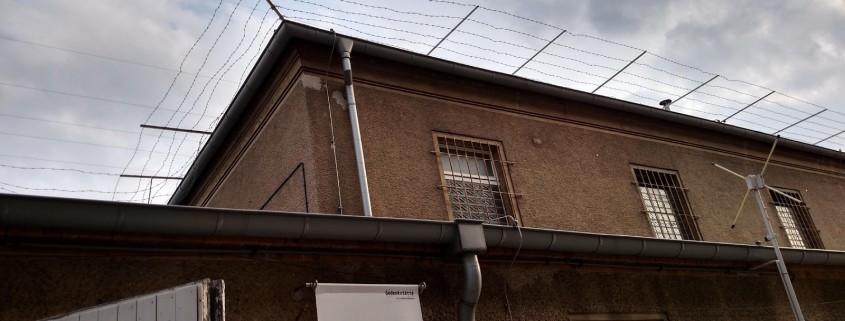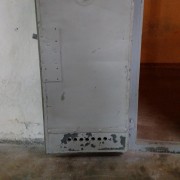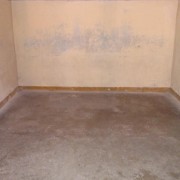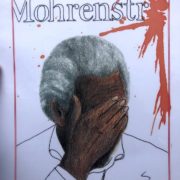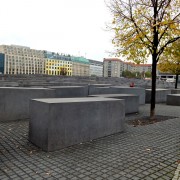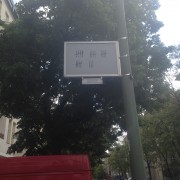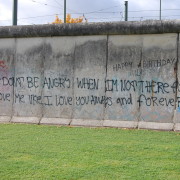The Hidden Truth inside East Berlin
By Jackie Myers
At the end of World War II, Germany was split into four different zones, occupied by America, France, British, and the Soviet Union. The eastern part of Germany was under the complete control of the Soviet Union. Although Berlin was in the center of the Soviet Union’s sphere of influence and it was the capital of East Germany, it was split between the West and the East. The Berlin Wall, built in 1961, physically separated the capital in two distinct parts. In 1945, the Stasi prison, located in Berlin-Hohenschönhausen opened and remained in use until 1989 when a non-violent revolution led to the overthrow of GDR’s (German Democratic Republic) dictatorship. This Stasi Prison was located in East Berlin, where it was originally set up by the Soviet Union and it was run by the SED, the secret police of the GDR. While in existence, as many as 20,000 people were imprisoned there who were thought to have ties with West Germany or who were in opposition to the communist dictatorship. The Stasi Prison had 91,000 employees, as well as 189,000 unofficial spies and as our guide had informed us, this was more than the Nazis had. The prison was set up so the outsiders did not know that the camp, prison, was there. The neighbors surrounding the prison were guards or supporters of the GDR.
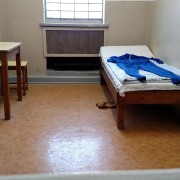
This is a picture of the newly added prison cells. Toward the end of the 1980s the prisoner was given pajamas, a sink, toilet, tables, and bed sheets. The prisoners in these cells were kept isolated from others.
Photo by Jacquelyn Myers
The prison conditions can be compared to those of a concentration camp during World War II. There was a specific part of the camp, in the basement, which is known as the “U-Boot” or the submarine. This was the first part of the prison that we walked through and you could smell the musk as soon as you walked down the white staircase. The rooms were small, and had a wooden bed against the back that stretched from one side of the room to the other. The room was darkly lit with the exception of a light above the door that consistently stayed on, despite the time of day. During the day prisoners were not allowed to sit despite only having a small cramed space to stand. The cells held between 5-8 prisoners. Interrogations were mainly held at night when the prisoners were tired and wanted to sleep. The purpose of this was to make psychological pressure on the prisoners to confess to crimes they did not commit in order to end their suffering. They had to sit on a chair, which was covered in cloth, with their palms down and back straight, while the investigation could last all night. If the investigation was over and it was time for the other prisoners to wake up, they would have to continue standing together with the others. If a prisoner was found sitting on the bed or sleeping during the day, she/he would be beaten and forced to stand for the remainder of the day. Inside the submarine, the food rations were low and there was only a small pot in the corner to be used by the prisoners as their bathroom. Being in this part of the prison made me feel exceptionally uncomfortable. During one moment of the tour as we were all standing in one of the cells, the tour guide began to close the door, I felt horrible because this was what the prisoners had to endure while they were in this part of the prison.
Walking through the rest of the camp we learned that as time went on, there was an addition to the prison camp built in the late 1950s. The addition included over two hundred cells and investigation rooms. When we first got to this section, we learned that the prisoners were picked up and transported in a truck after they had been driven around for hours so that they would get disoriented . In addition, the tour guide told us that when the prisoners got to the prison they had to undress and were searched for anything that was valuable, this made me think of the prisoners who were transported to camps during the Nazi regime in World War II. Prisoners in this part of the prison were in individual rooms with a bed and were called by the number on their door. The purpose of the prison was to get the people to break their resistance and admit to the crimes of which they were accused. The stories that the tour guide had told us about how the prisoners were treated made me nauseous.
Prisoners were never allowed to be in the hallway with each other, they were made to face the wall with their hands behind their back while the prison guard turned on the red light to alert the other prison guards that there was a prisoner coming down that hallway. This was another way for breaking the prisoner’s will by making her/him feel helpless and cut off from others. However, if the prisoner cooperated, answered questions and obeyed the police they would be given special privileges. These special privileges included being able to write to friends or family, although both incoming and outgoing letters were scanned. They were also allowed to have time outside in the courtyard, which was a small room with the ceiling open, in some cases, with a fence roof. However, they were not allowed to just stand still, lean against a wall, or sing while they were out there.
Throughout the tour I was surprised that this is what East Germany was doing to its citizens while under the Communist dictatorship. The conditions that the prisoners endured make me correlate to those in a concentration camp. They were called by a number, had to share small spaces with a large number of people, and were not allowed to sit down during the day. The purpose of the Stasi prison was to punish those who were against the Communist dictatorship. They often sat in interrogation rooms for hours on end, until they gave up from the psychological and physical abuse they endured. Once a prisoner admitted that they had committed the crime, they could go months without seeing a “lawyer” to plead their side. Even when they met with the lawyer, the lawyer was not there to hear the prisoner’s side. Instead, they were there to show why what they did was wrong. In most cases the lawyers would give the prisoner a sentence which was the complete opposite of what they asked. An example is, if they wanted to leave East Germany with their family forever, the lawyer could have written that they requested to stay in East Germany for the rest of their lives.
Visiting the Stasi prison camp gave me an insight and new knowledge of what happened inside of Berlin after the war had ended and the Soviet Union took control over East Germany You do not learn from the history books in the United States about the treatment of prisoners and what life was like in the Eastern part of Germany. The Soviet Union hid the evidence of the prison from the community around them. In addition many people who lived outside of East Germany did not know how the East German people were being treating.

